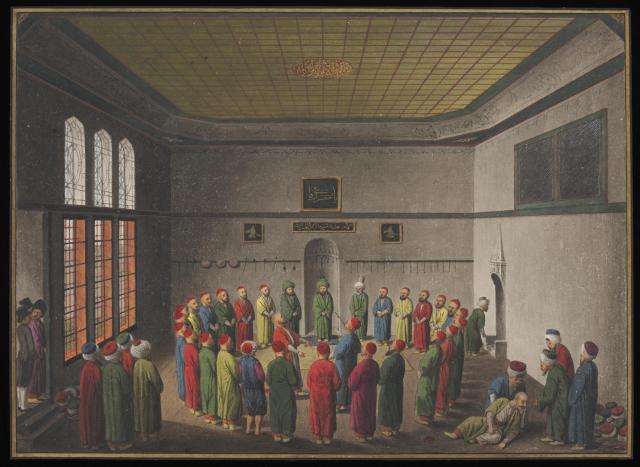
During his various journeys,ʿAbd al-Ghanī al-Nābulusī (1641-1731) visited many, many shrines of saints and prophets, some known throughout the world, others of only local purchase. In his accounts of his journeys he makes much of these visits, recording them in sometimes great detail and with his own poetic contributions. Very often he reports local accounts of the holy person venerated in the shrine, providing precious insights into the ‘oral hagiography’ and local practices of saintly veneration and saintly space that prevailed in the late seventeenth century around the Ottoman world.
One of the many holy tombs al-Nābulusī visited in the course of his extended stay in Cairo during the pilgrimage journey recounted in his al-Ḥaqīqa wa-al-majāz fī riḥlat bilād al-Shām wa-Miṣr wa-al-Ḥijāz was that of Imām al-Layth ibn Saʿd (713-791), a major figure in the early elaboration of Islamic jurisprudence. Rather like his ‘neighbor’ Imām al-Shāfiʿī, by al-Nābulusī’s time Imām al-Layth was regarded as much, if not more, as a wonder-working saint than as a scholar of jurisprudence, as the story I’ve translated here suggests.
While the central point of the story is pretty straightforward- and rather charming- certain details stand out for thinking about how Ottoman Muslims experienced the built space of such shrines. First, it should be noted, as al-Nābulusī does in introducing this structure a bit before the translated passage, and as can be seen in the photographs, reproduced here, taken by K.A.C. Creswell in the late 1910s, the shrine sat pretty much continuous with the surrounding houses, marked off by its dome (qubba, see below) and relatively low but ornate minaret, both of late Mamluk provenance. The line between house and shrine could be blurred in other ways: the man in the story practices the venerable rite of ‘incubation,’ sleeping in a holy place so as to receive a vision or answer to a prayer. If the shrine was seen as a sort of ‘home’ for the entombed saint, incubation was equivalent to a guest spending the night.
The fact that al-Nābulusī heard this story, perhaps from a neighbor to the shrine, indicates that the space remained ‘alive’ to local residents and devotees, as did the saint himself, even to the point of attracting an additional element to his name (at least among his local devotees). It’s a good reminder that whatever the intentions of the original founders of the tomb (which certainly predates the ‘modern’ late Mamluk construction visible now to us) or of later patrons and builders, those intentions might have only partially been respected or even recognized by later participants in the sanctified space.

The reason for his being given the kunya [1] of Abū al-Makārim [that is, ‘Father of Noble Deeds’] among the people of Cairo is what was told us in the following manner, namely that there was a man with many debts. He set out sincerely for a pious visit to [Imām al-Layth], and recited the Fātiḥa for him and supplicated God, asking for relief from his debt. He slept here in the shrine and saw [Imām al-Layth] in a dream. He said to the man: ‘When you arise from your dream take hold of and possess what you see upon my tomb!’
When the man arose from his sleep, he saw upon his tomb the bird known as parrot (babbaghā’) or parakeet (durra), and it could recite in the manner of an expert reciter the Qur’an in all its seven recitations! [2] So he took hold of it, and soon the people had heard of it, to the point that word of it reached the ruler of Cairo, and he commanded that the man be brought to his presence so that he might take the bird from him. When he came into the ruler’s presence the ruler bought it from him, and with the money the man was able to repay all of his debts.
Continue reading “Imām al-Layth, the Debtor, the Parakeet, and the Ruler”




